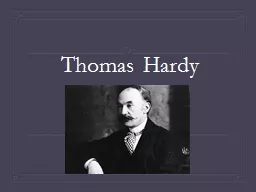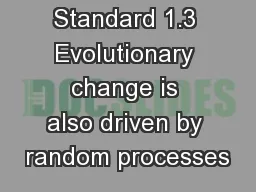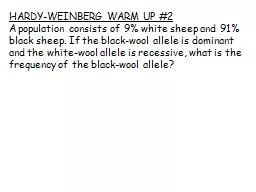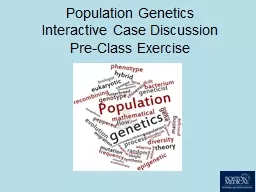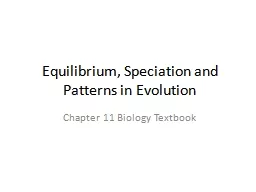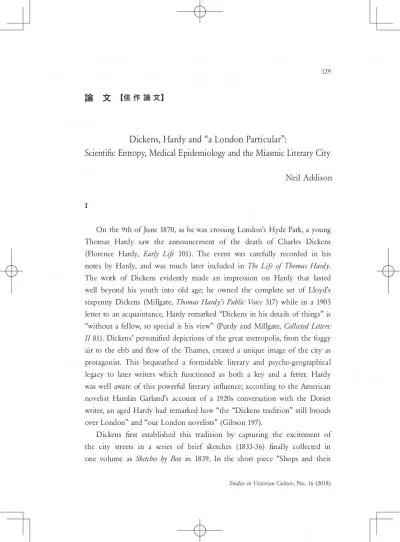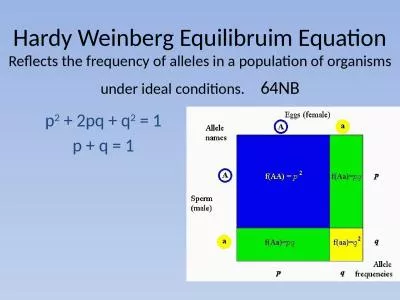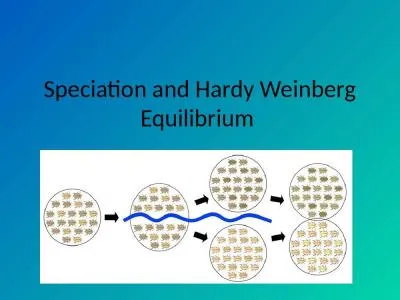PPT-Hardy Weinberg Equilibrium
Author : ginocrossed | Published Date : 2020-06-16
Wilhem Weinberg 1862 1937 Gregor Mendel G H Hardy 1877 1947 18221884 Lectures 411 Mechanisms of Evolution Microevolution Hardy Weinberg Principle Mendelian Inheritance
Presentation Embed Code
Download Presentation
Download Presentation The PPT/PDF document "Hardy Weinberg Equilibrium" is the property of its rightful owner. Permission is granted to download and print the materials on this website for personal, non-commercial use only, and to display it on your personal computer provided you do not modify the materials and that you retain all copyright notices contained in the materials. By downloading content from our website, you accept the terms of this agreement.
Hardy Weinberg Equilibrium: Transcript
Download Rules Of Document
"Hardy Weinberg Equilibrium"The content belongs to its owner. You may download and print it for personal use, without modification, and keep all copyright notices. By downloading, you agree to these terms.
Related Documents


